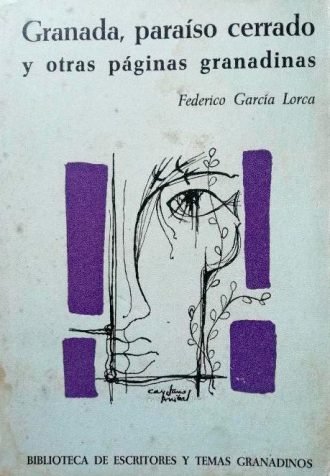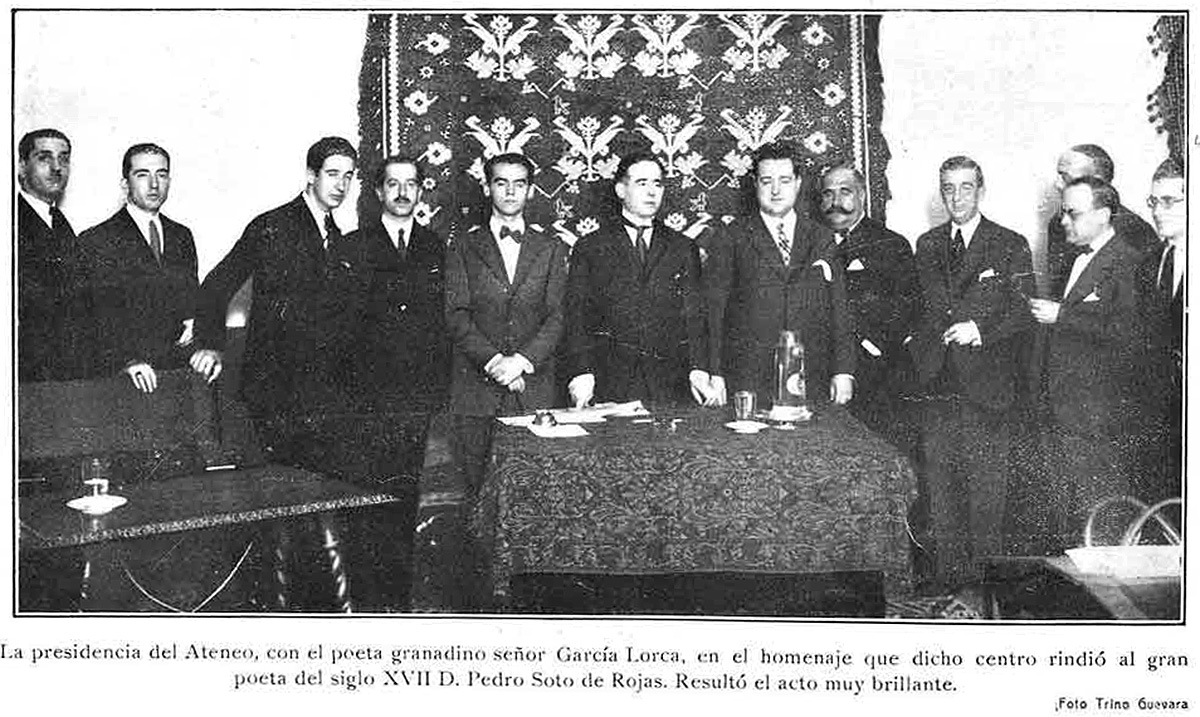
In this speech, Federico García Lorca, from the poem by Soto de Rojas, Paradise closed for many, gardens open for few, makes a description of Granada and its inhabitants. He begins by speaking of Granada, a city that loves everything small, limited, that does not want to leave its house. The creations of Granada are small things like the dressing room or the viewpoint. The schools of Granada are also schools of artists who work on small pieces. The arabesque tradition of the Alhambra weighs on them. The city has not learned that it has the Palace of Charles V or the Cathedral.
Soto de Rojas thinks in the same way (he is influenced by the work of Spanish Baroque poet Luis de Góngara) but instead of playing with seas or jungles, he encloses himself in his garden. His characteristic is the preciousness of Granada. The city is full of initiatives, but lacks action. This native of Granada announces adventure, he is contemplative. The title of the book by Soto de Rojas defines it perfectly. Lorca then analyzes the poem through its seven periods or terraces.
Lorca read this paper for the first time on October 17, 1926 at the Ateneo de Granada (installed since this fall at the Cervantes Theater) inaugurating the season. There were several acts to pay tribute to Soto de Rojas.

He read the paper again at the Residencia de Estudiantes in 1928 and on March 12, 1930 he read it in Cuba, at the Teatro Principal de la Comedia in Havana, together with four other lectures, and it was very successful according to critics, audiences and box-offices.
The complete manuscript has not been preserved. García-Posada reproduces Maurer’s edition (Speeches, I, Alianza, 1984) based on five signed sheets plus the summary of The Defender of Granada of October 19, 1926, exhumed by Marie Laffranque.
Of all the references made by the author to the city of Granada, this presentation contains one of the most interesting. As described in this text, Granada is a city that “loves the tiny”, “cannot leave its house”, it is solitary and pure, enclosed… He speaks of the inner Granada, of the houses of the Albaicín, a city perfectly defined in Soto de Rojas’ title and which he describes as “the aesthetics of the diminutive, the aesthetics of tiny things”. Granada dreams, it is given to fantasy, but it shuns adventure, action, going outside, it is a contemplative city. The Grenadian has only a few friends and instead of wanting to succeed in the world, he prefers to contemplate what is happening from his window. It is a city full of initiatives, but lacking in action. The Grenadian is not in a hurry, it is a city “of leisure and tranquility” in which there can be “samplers of waters, temperatures and twilights”.

After one of the tributes to Soto de Rojas, some members of the Ateneo de Granada went up to the Carmen de los Mascarones, the house of Soto de Rojas, in the Albaicín district, to inaugurate a commemorative tile drawn by Hermenegildo Lanz, in the fall of 1926. Carmen de los Mascarones (The House of Figureheads) is named after the two figureheads on the facade. The garden no longer exists.
In the speech Lorca mentions the Alfacar or Ainadamar irrigation channel (Acequia de Aynadamar). Curiously, where Lorca would spend his last hours would be in the mill called La Colonia. through which this irrigation channel passed.
(Fragment)
Granada loves everything tiny. And in general all Andalusia. The language of the people puts verbs in the diminutive. Nothing so inciting for confidence and love. But the tiny things of Seville and the tiny things of Malaga are cities at the crossroads of water, cities with a thirst for adventure that escape to the sea. Granada, still and fine, girded by its mountains and firmly set in its surrounding area, seeks its horizons, recreates itself in its small jewels and offers in its bland tiny language, without rhythm and almost mundane, if compared to the phonetic dance of Malaga and Seville, but cordial, domestic, endearing. Tiny and scared like a bird, which opens secret chambers of feeling and reveals the most defined nuance of the city.
The diminutive has no other mission than to limit, bound, bring into the room and put in our hand the objects or ideas of great perspective.
We limit time, space, the sea, the moon, distances, and even the prodigious: action.
We do not want the world to be so big, nor the sea so deep. There is a need to limit, to tame the immense terms.
Granada cannot leave its home. It is not like other cities on the shores of the sea or the great rivers, which travel and return enriched by what they have seen. Granada, solitary and pure, shrinks, girding its extraordinary soul and has no other way out than its natural high place of stars. For this reason, because it has no thirst for adventure, it folds in on itself and uses the diminutive to gather its imagination, as it gathers its body to avoid excessive flight and to harmonize its interior architectures soberly with the living architectures of the city.
That is why the genuine aesthetics of Granada is that of the diminutive, the aesthetics of tiny things.
The creations of Granada itself are the dressing room and the viewpoint of beautiful and reduced proportions. As well as the small garden and the small statue. (…)